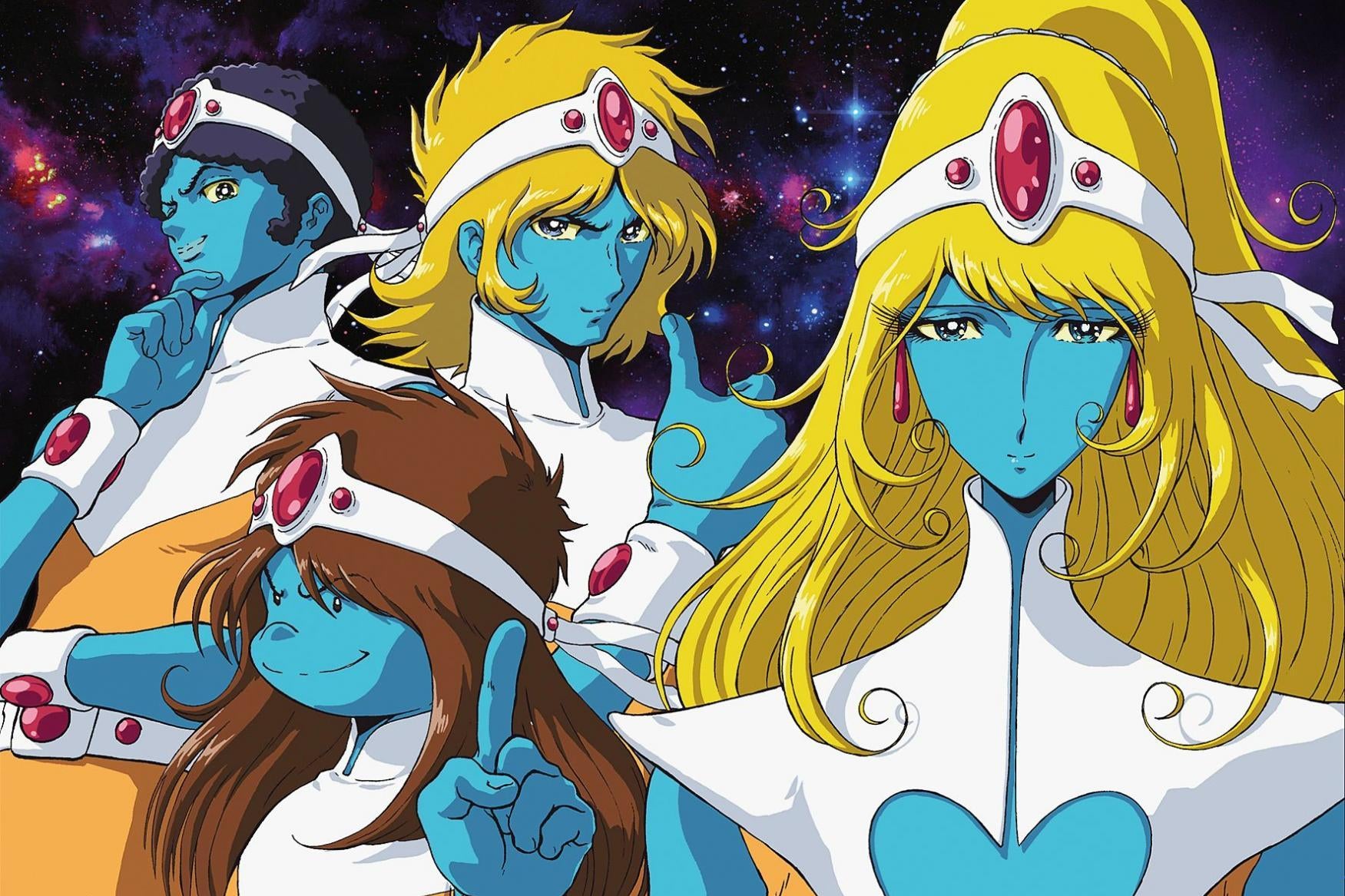Daft Punk, they of the mysterious robot helmets and mainstream electronic hits, announced on Monday that they had broken up. The group had been on hiatus, so this felt more like people who had tacitly already called it quits just making the subtext text. But it still represents the end of an era for a group whose most recent—and, ultimately, final—release, 2013’s Random Access Memories, picked up the Grammy for Album of the Year.
There is a lot to celebrate and acknowledge in Daft Punk’s 28-year career. But what’s always stood out to me as its most interesting, influential release isn’t a concert or an album: It’s an anime. Interstella 5555: The 5tory of the 5ecret 5tar 5ystem may not be the duo’s most recognizable work, but it’s a glorious one, a visual album-type project that brings two amazing art forms together seamlessly.
Interstella 5555 is a companion to Daft Punk’s album Discovery, Daft Punk’s second record and its breakout hit. Released in 2001, Discovery features many of the songs that the duo remains best-known for, like “One More Time,” “Harder Better Faster Stronger,” and “Digital Love.” In Daft Punk’s native France, Discovery went triple-platinum; here in the U.S., it went gold, with “Harder Better Faster Stronger” in particular finding new life nearly a decade later courtesy of Kanye West’s interpolation on his hit “Stronger.”
It’s a fun album, highly danceable and disco-inspired, and it’s got a strong sense of sci-fi at its core. Daft Punk’s Guy-Manuel de Homem-Christo and Thomas Bangalter had already modeled themselves after robots, after all, and Discovery was their real proof of concept. Interstella 5555 crafts a loose storyline around and lend beautiful visuals to that soundscape. The film, which runs around an hour, was directed by Leiji Matsumoto, the creator of classic, mid-1970s manga like Galaxy Express 999 and Space Battleship Yamato, both informed by sci-fi from the ’60s and ’70s and the dream of space travel. Matsumoto initially created the different parts of Interstella 5555 as separate music videos, each set to a different song from the album. But once threaded together, those videos created an overarching whole— something more magical than the sum of its very good parts.
In another galaxy, a pop band composed entirely of blue people with angelically blond hair is hunted down by alien forces and abducted from its home planet. They’re forced by the leader of these bad dudes to perform to a fanatical stadium audience and produce more hit records—5,555 of them, in fact. Somehow, this will help the bad guy rule the universe. Once the band figures this out, the members are able to fight off their captors and free themselves. Then, at the end, we find out that … this was all a dream of some young, Daft Punk-loving fan.
It sounds silly, which it sort of is. But the pairing of the visuals and the music was astounding at the time, something that I, as an elementary schooler, had never conceived of. Anime, my favorite thing, could be set to … real, popular, legitimately great English-language music? Who knew? I first watched Interstella 5555 in summer 2001, when Cartoon Network’s anime block Toonami aired it after midnight; it was screened then in four “episodes,” as the final project wouldn’t be finished until 2003. My sister and I sat glued to the TV and stayed up way past our bedtimes in order to see the anime story of these alien pop artists singing some great disco-infused hits. The movie was the kind of shonen anime we were used to watching after school and obsessing over, a show with aliens and nonsensical evil schemes and the like. But what made this different was how it was predicated not on any dialogue or strict storytelling. The videos were more about creating a mood, invoking the sensations that the music inspires and hanging a story around them for a more compelling watch.
I didn’t know until then that music videos were ever informed by my favorite visual medium. I’d only seen the live-action ones that MTV always played, never animated short films that were as much fun to watch as they were to listen to, without any involvement of human beings—just pure art. (The Toonami block aired some Gorillaz music videos after Interstella 5555, similarly influential on two young anime nerds who had yet to develop real music taste.) Although Interstella 5555 went on to premiere at Cannes in 2003, it has become somewhat of an obscurity. It’s only legally available to stream through a subscription to the incredibly niche service Qello Concerts; a Blu-Ray was released in 2011, but finding new copies of that or the DVD release is a crapshoot. The easiest way to watch it these days is by checking the usual suspects. (I’ll leave that leg work to you.)
As a Daft Punk fan, this anime visual album is a must-watch. And now that the duo has hung up their helmets and headed into retirement, there’s no better time to watch some rare performances of theirs—even if they’re animated.
